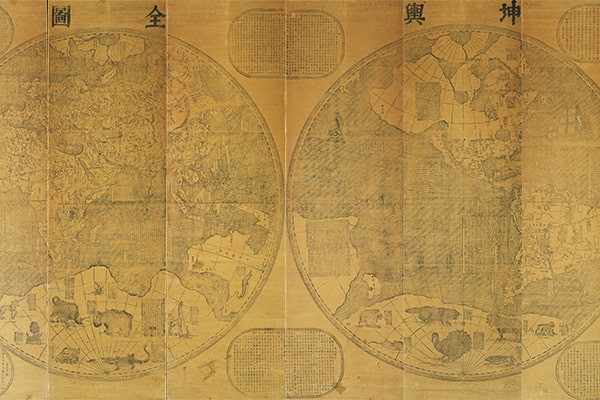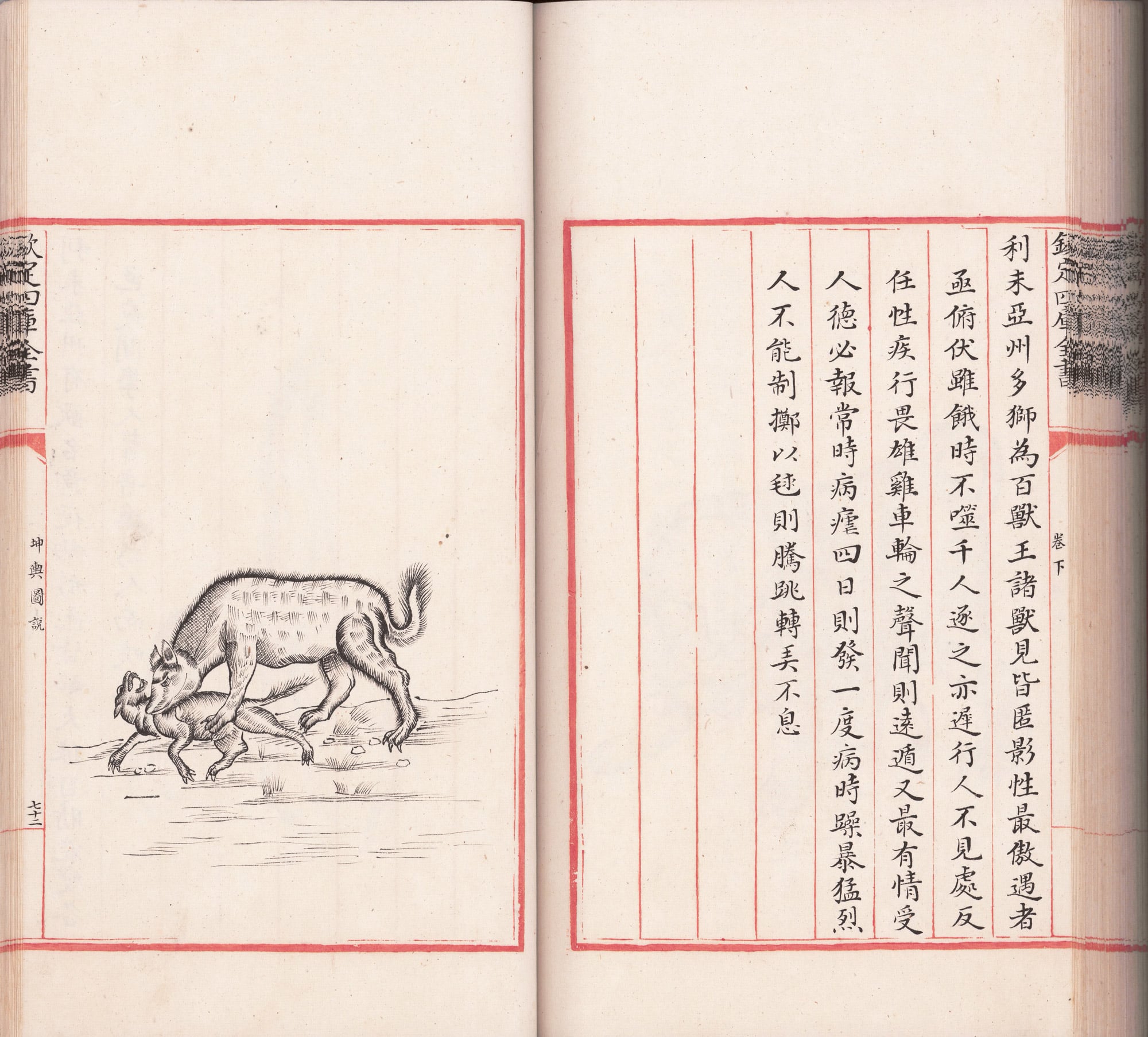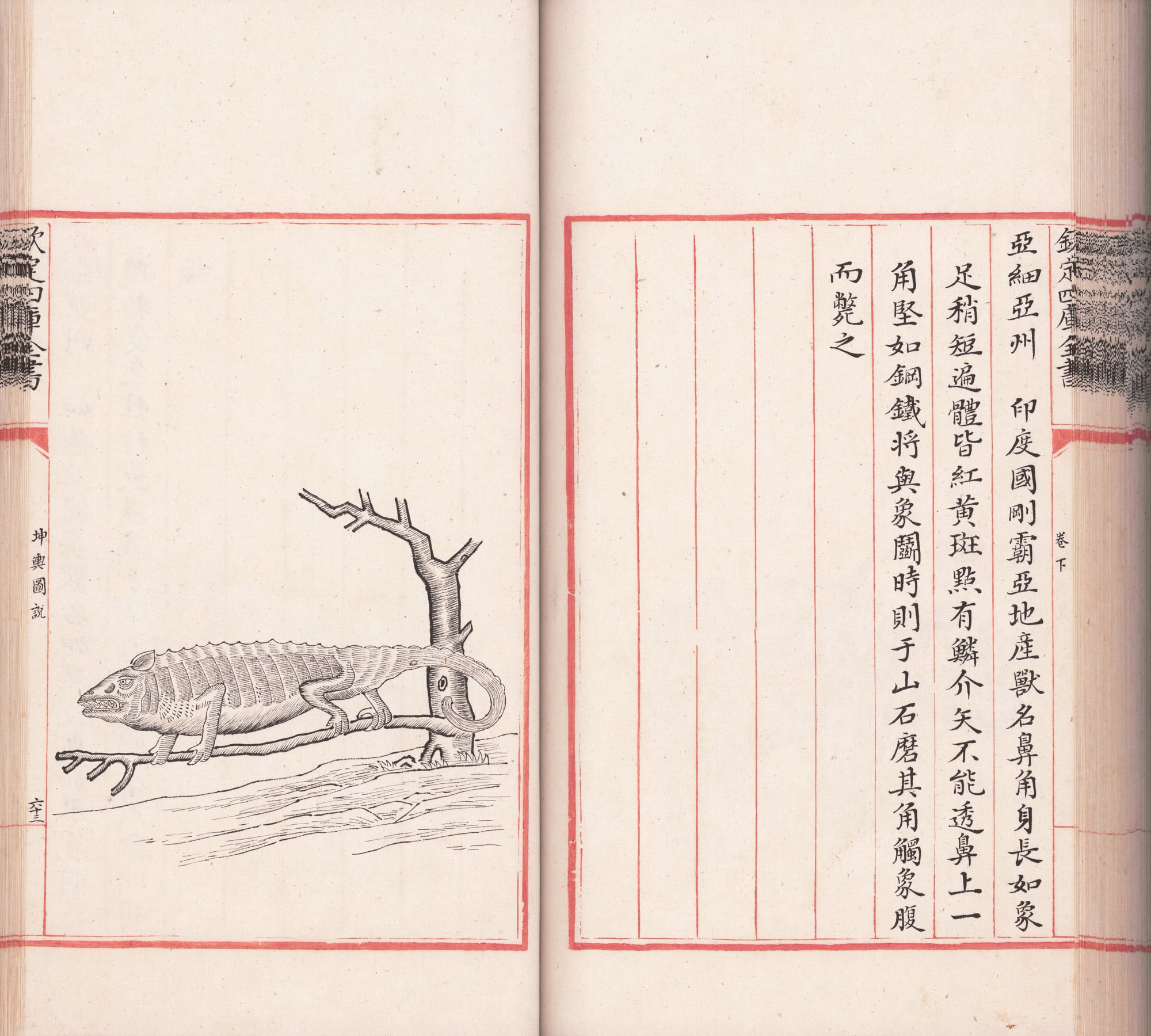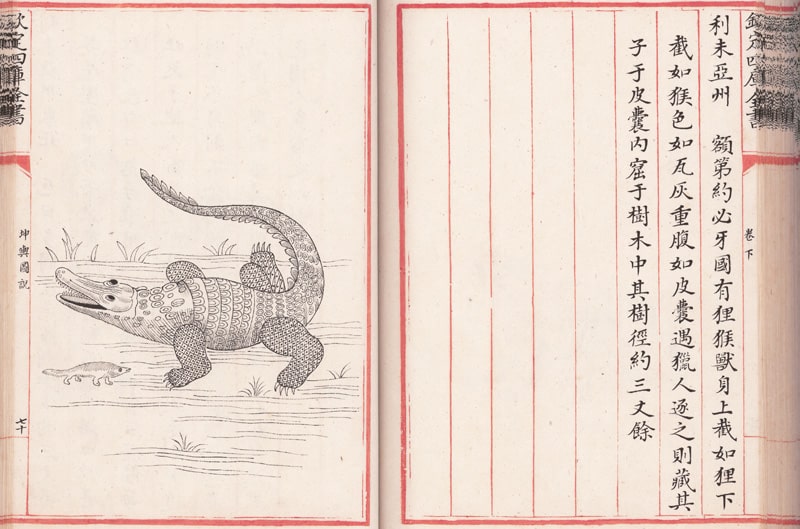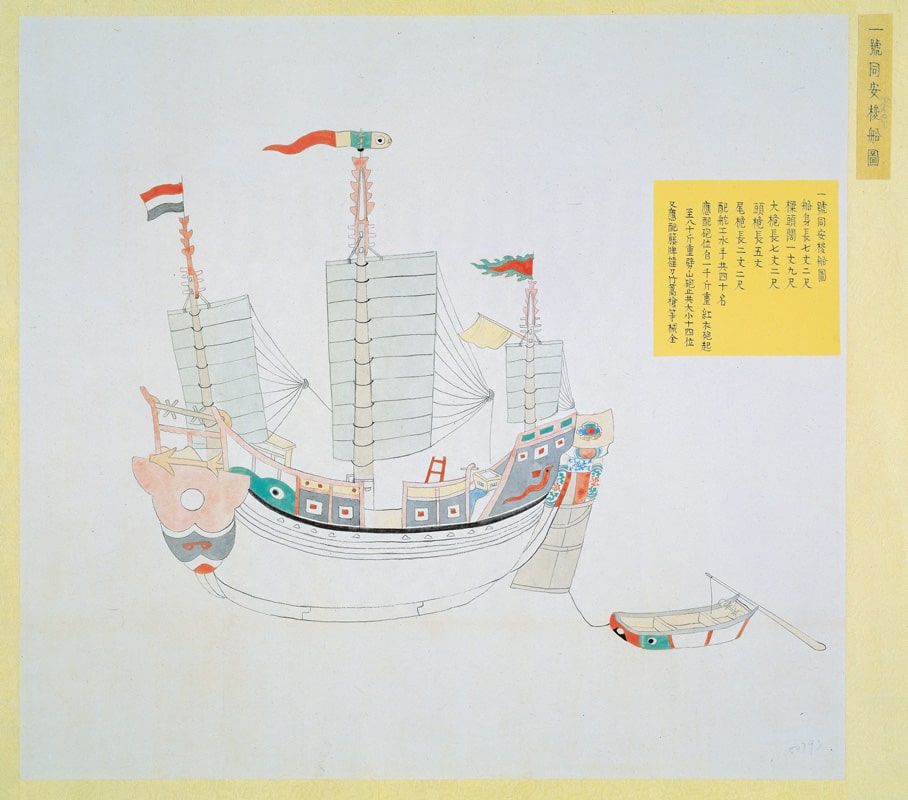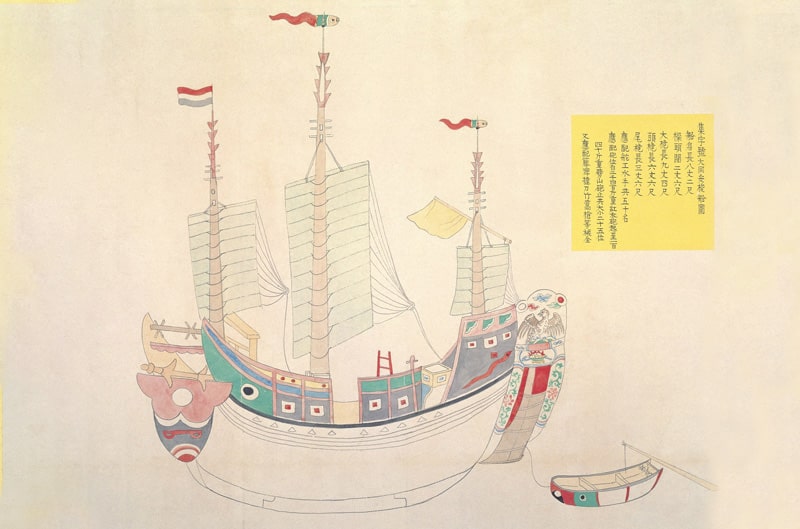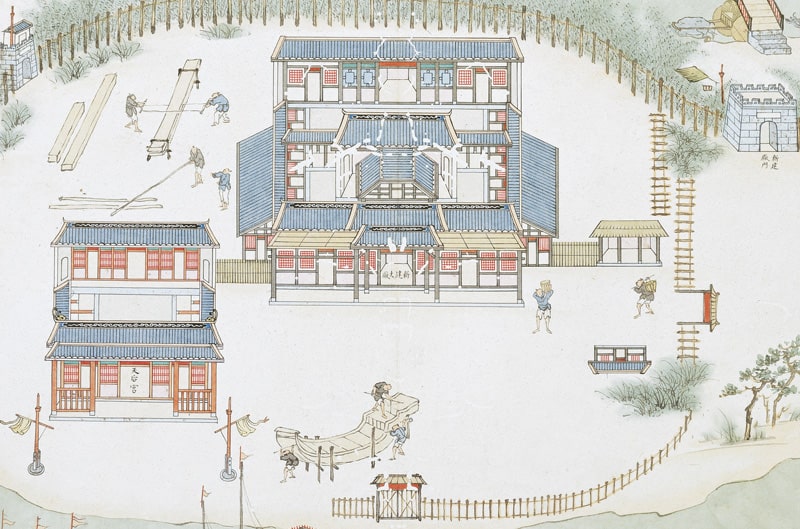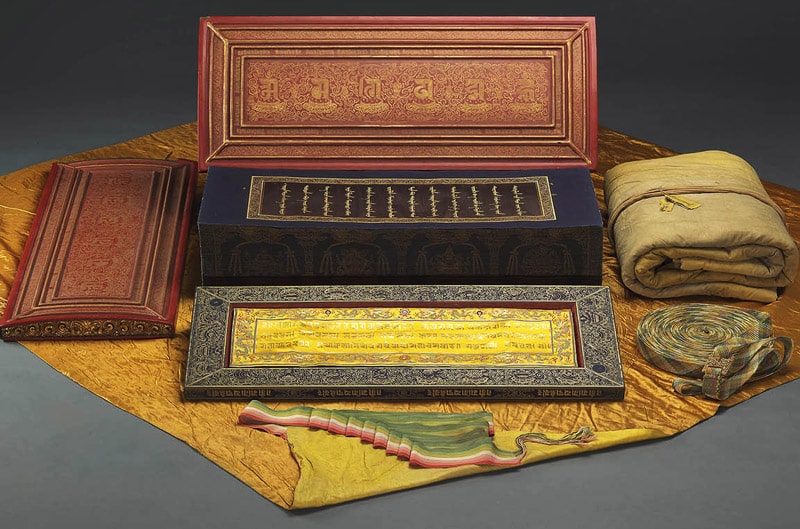About Exhibits
Adventure Map
The section "Adventure Map" is the starting point for this quest. Adventurers need to carefully observe the Kunyu Quantu (Great Universal Map in 1674) from Ferdinand Verbiest in the Qing Dynasty and start the first step in your adventure!
This area includes the AR-based new media artwork Ferdinand Verbiest's Kunyu Worldview, The Realm of Kunyu—An Adventure into the World of the 17th Century and the replica of the Kunyu Quantu are used as means to integrate real and virtual objects and take visitors on a survey through the physical geography and illustrations of various creatures from the 17th century.
Please take a close look! The AR-based Ferdinand Verbiest's Kunyu Worldview including ancient Chinese depictions of what we now call "giraffe", "turkey", "rhinoceros", "lion", and "ostrich". World maps from the collection of Tainan Public Library are also shown in this section alongside interactive exhibits for educational purposes, as to contrast ancient and modern conceptions of animals, as well as enhance understanding on historical maps and relevant records.

- Ferdinand Verbiest's Kunyu Worldview New Media Art Installation
Ferdinand Verbiest's Kunyu Worldview New Media Art Installation utilizes modern augmented reality (AR) technology to reconstruct the 17th century worldview and enables the habitats of ancient creatures to reappear before us in the form of new media art. Visitors are able to use mobile devices to scan the globe before them and find out which animal will appear on the screen. Observe how these early depictions of familiar species differ are different from our present understanding. Pick up your mobile device and start globe-trotting in search of rare beasts!
- Kunyu Quantu (Great Universal Map)
- Ferdinand Verbiest, Qing Dynasty
- 1674 CE
Kunyu Quantu, completed in 1674 by the Jesuit missionary Ferdinand Verbiest, was used as an explanatory apparatus to impart the geophysical worldview of the West to Emperor Kangxi. Comprised of eight long scrolls, it is the only existing illustration of the Eastern and Western hemispheres in the history of Chinese geography. The map introduces Western geographical and astronomical theories from the 16th and 17th centuries, such as the spherical Earth theory, atmospheric sciences, as well as theories of tides and earthquakes. The map also shows European sailing vessels and several depictions of rare and spectacular terrestrial and marine creatures, for example, giraffes, chameleons, beavers, and whales, successfully quenching the curiosity of contemporaries.
- Section of Kunyu Tushuo (The Illustrated Explanation of the World)
- Ferdinand Verbiest, Qing Dynasty
- from the Wenyuange Edition of the Complete Library in Four Sections (Siku Quanshu), Kangxi reign (1674)
Ferdinand Verbiest made the Kunyu Tushuo (Illustrated Explanation of the World) to help explain the Kunyu Quantu. The first half contains information about geography and people while the second half introduces the countries, natural features, customs, and products of various countries. It looks at five continents and ends with seven magnificent illustrations of objects from the West. Included in the second half are 23 illustrations of animals with brief explanatory text.
Brave the Wind and the Waves
Follow the Tong-an Ship, and brave the wind and waves!
Tong-an ships, traditional sea vessels that emerged in the middle of the Qing Dynasty, were named after their manufacturing site located in Tong-an County of Fujian Province. Originally used as merchant ships, Tong-an ships were further leveraged by the imperial navy and pirates in the late Qianlong Dynasty. Prior to the introduction of the steamboat, Tong-an ships were the most representative sailboats in ancient China.
In addition to their historical background, this section also attempts to unravel and analyze many other aspects of Tong-an ships through interactive exhibits, teaching aids for children, and so forth. Digital interactions and concrete activities facilitate a comprehensive understanding on the history, structure, and significance of Tong-an ships in terms of maritime development. Local features of Tainan, represented by Fort Provintia and cultural artifacts from the collections of the 1661 Taiwan Warship Museum and NPM, are also featured in this section.
- Diagram of the Ji-type Large Tong-an Ship
The No. 1-type Tong-an ship- Wang Zhiyi, Governor-General of Min-Zhe, Qing Dynasty
- January 27 of the 22nd year of the reign of Emperor Jiaqing
Two important pictorial records, Diagram of the Tong-an Ship Ji and Diagram of Tong-an Ship No. 1, show the biggest and most heavily-armed class 1 and class 2 warship models from the Tong-an ship family. These highly detailed and colored drawings of the two Tong-an ships, attachments to zouzhe (memorials delivered to the emperor), serve as important evidence awaiting further exploration by Taiwanese and naval historians.
- Illustrated Guide to the Arsenal of Taiwan Prefecture
- Compiled by Jiang Yuanshu, Prefect of Taiwan Prefecture
- Qianlong's reign, Qing dynasty
In the 17th century, Taiwan had begun to be responsible for the construction of official ships. Ship repairing is an important task in maintaining the military power of the navy. The Taiwanese shipyard was as one of the five shipyards in Fujian. The Taiwanese military factories, under the jurisdiction of the Administrator of Taiwan Circuit, were built outside Xiaobeimen (located in modern day Tainan) and used for storing wood, nails, and rapeseed.
As the military factories only occupied the space of two small cabins, Jiang Yuanshu acted on the belief that "the construction of the munitions factory demands rapid development and donated money for the building of a grand entrance, a lobby, fourteen storehouses on the left and right wings, and accommodations for the facility inspection staff. Wooden fences were used to secure the factory area. The Mazu Temple north of the factory was renovated and two flagpoles were installed.
From the upper left corner of the diagram, several artisans are observed selecting the appropriate wooden materials while others are sawing the materials. The area in front the factory was used to build and repair warships, with one observed under construction. Two warships are stationed along the shores ahead of the factory, one already built and the other one still missing a mast.
Legendary Treasure
The Tibetan Dragon Sutra: Imperial Manuscript Copy in Gold Ink, or simply the Tibetan Dragon Sutra, was commissioned by Empress Dowager Xiaozhuang, the grandmother of the Kangxi Emperor, After overcoming various difficulties such as the lack of manpower and finance, it was completed in the eighth year of Emperor Kangxi of the Qing Dynasty (1669).
The Tibetan Dragon Sutra: Floating Shadows and Transmogrification—Immersive Interactive Theater initiates an interactive mechanism through sensing the number of people present. Words from the scriptures, the Ashtamangala (Eight Auspicious Signs), and the illustrations of various divine beings, among other visual elements, progressively manifest in an awe-striking three-stage process, stirring the soul of viewers with the artistic spirit of the Tibetan Dragon Sutra. The Tibetan Dragon Sutra AR can be experienced in two ways: a translation of the six-syllabled mantra Om mani padme hum and the colorful apparition of bodhisattva Avalokitesvara; viewers will feel as if they have received the blessing from the sacred text. 10 Facts About the Dragon Sutra provides basic knowledge on the historical background, ornamentation, visual symbolism, and aesthetic expression of the Tibetan Dragon Sutra.
The Tibetan Dragon Sutra: Floating Shadows and Transmogrification—Immersive Interactive Theater
The Tibetan Dragon Sutra: Floating Shadows and Transmogrification—Immersive Interactive Theater is based on the Tibetan Dragon Sutra: Imperial Manuscript Copy in Gold Ink, which is housed in the collections of the National Palace Museum. This compilation of Buddhist scriptures from the Tibetan tradition was completed during Emperor Kangxi's reign in the Qing Dynasty, and not only has immense religious significance, but also extremely high artistic value.
This installation comprises a detection and feedback system that can count the number of participants present and activate projection in response, providing visitors with a progressive three-part experience. Through this immersive theater, viewers can see the visual elements adorning the exterior and interior of the manuscripts' covers, and experience the beauty of the Tibetan Dragon Sutra in a dream-like atmosphere.
- Tibetan Dragon Sutra
- Handwritten in Gold Ink during the Emperor Kangxi


